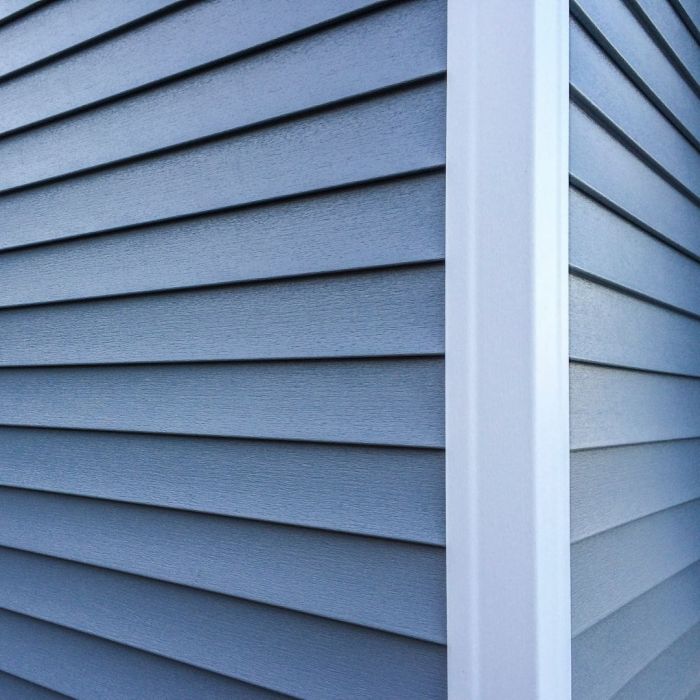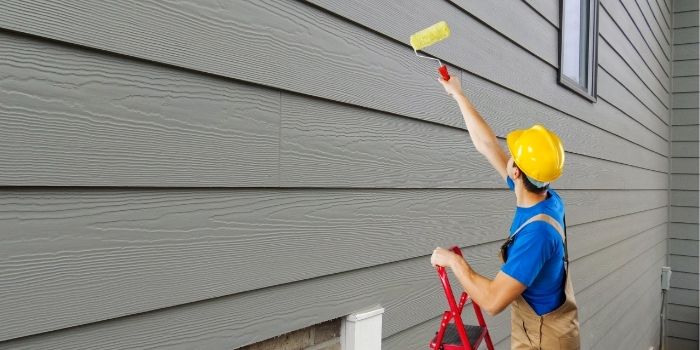Enhancing Your Home: The Ultimate Guide to Hardie Board Siding Painting
Embark on a journey to transform your home with the art of hardie board siding painting. This guide is your key to unlocking the secrets of achieving a flawless finish and maintaining the beauty of your siding for years to come.
Dive in and discover the tips and techniques that will elevate your home's curb appeal to new heights.
Uncover the essential tools, techniques, and care tips needed to master the art of hardie board siding painting.
Preparation for Painting Hardie Board Siding

Before starting the painting process on Hardie board siding, it is essential to gather the necessary tools and materials. Cleaning the surface thoroughly is crucial to ensure proper adhesion of the paint. Additionally, using the right primers and paints specifically designed for Hardie board siding can help achieve a long-lasting and professional finish.
Necessary Tools and Materials:
- Power washer or hose
- Bristle brush or soft cloth
- Mild detergent or TSP cleaner
- Painter's tape
- Primer recommended for Hardie board siding
- Exterior paint suitable for Hardie board siding
- Paint rollers and brushes
- Drop cloths or plastic sheeting
Cleaning the Surface:
Before painting, it is crucial to clean the Hardie board siding thoroughly to remove dirt, dust, and any mildew. Start by using a power washer or hose to rinse off the surface. Then, mix mild detergent or TSP cleaner with water and scrub the siding using a bristle brush or soft cloth.
Rinse the surface again to ensure all cleaning residue is removed. Allow the siding to dry completely before proceeding with the painting process.
Recommended Primers and Paints:
When painting Hardie board siding, it is recommended to use a primer specifically formulated for this type of surface. This will help the paint adhere better and ensure a more durable finish. Additionally, choose an exterior paint that is suitable for Hardie board siding, providing protection against weather elements and maintaining color vibrancy over time.
Painting Techniques for Hardie Board Siding
When it comes to painting Hardie board siding, using the right techniques can make a significant difference in achieving a smooth and even finish. Proper application of paint is crucial to avoid drips, streaks, or bubbles that can detract from the overall look of your siding.
Additionally, considering the ideal weather conditions for painting can help ensure the best results and longevity of the paint job.
Proper Paint Application
- Clean the surface: Before painting, make sure the Hardie board siding is clean and free of any dirt, dust, or debris. This will help the paint adhere better and result in a more even finish.
- Use high-quality paint: Invest in a high-quality exterior paint specifically designed for use on Hardie board siding. This will ensure better adhesion and durability.
- Apply paint evenly: Use a brush, roller, or sprayer to apply the paint in smooth, even strokes. Avoid overloading the brush or roller to prevent drips and streaks.
- Work in small sections: To maintain a wet edge and prevent overlap marks, work in small sections at a time. This will help achieve a seamless finish.
- Allow proper drying time: Follow the manufacturer's instructions for drying time between coats to prevent bubbling or wrinkling of the paint.
Ideal Weather Conditions
- Avoid painting in extreme temperatures: Painting Hardie board siding in very hot or cold temperatures can affect the drying process and adhesion of the paint. Aim for temperatures between 50-85 degrees Fahrenheit for the best results.
- Avoid painting in direct sunlight: Painting in direct sunlight can cause the paint to dry too quickly, leading to streaks or uneven coverage. Choose a cloudy day or work in the shade to ensure proper drying time.
- Avoid painting in high humidity: High humidity can also affect the drying time of the paint and lead to bubbling or wrinkling. Aim for humidity levels between 40-70% for optimal painting conditions.
Maintenance and Care of Painted Hardie Board Siding
Proper maintenance is essential to ensure the longevity of painted Hardie board siding. By following some simple tips, you can keep your siding looking great for years to come.Regularly inspect the painted surface of your Hardie board siding for any signs of damage or wear.
Look out for chipping, peeling, or fading paint, as well as any areas that may need touch-ups.
Frequency of Repainting or Touch-Ups
- It is recommended to repaint Hardie board siding every 5-7 years to maintain its appearance and protect it from the elements.
- Touch-ups may be necessary more frequently, especially in areas that are exposed to harsh weather conditions.
Addressing Issues with Painted Hardie Board Siding
- If you notice chipping or peeling paint, gently sand the affected area and apply a fresh coat of paint to prevent further damage.
- To address fading paint, consider using a UV-resistant paint or applying a clear sealant to protect the surface from sun damage.
- For larger areas of damage, it may be necessary to repaint the entire section of Hardie board siding to ensure a uniform appearance.
Comparing Paint Options for Hardie Board Siding

When it comes to painting Hardie board siding, choosing the right paint finish is crucial for achieving the desired look and ensuring long-term durability. Different types of paint finishes offer unique benefits and drawbacks that homeowners should consider before making a decision.
Types of Paint Finishes
- Flat Finish: Flat paint is ideal for concealing imperfections on the surface of the Hardie board siding. However, it is less resistant to dirt and stains compared to other finishes.
- Satin Finish: Satin paint offers a subtle sheen and is easier to clean than flat paint. It provides a more durable finish that can withstand the elements better.
- Semi-Gloss Finish: Semi-gloss paint is highly durable and resistant to moisture, making it suitable for areas with high humidity or exposure to the elements. It also offers a shiny appearance that adds depth to the siding.
Durability of Paint Brands
- Sherwin-Williams Duration: Known for its long-lasting durability and color retention, Sherwin-Williams Duration is a popular choice for painting Hardie board siding.
- Behr Premium Plus Ultra: Behr Premium Plus Ultra paint is known for its excellent coverage and resistance to fading, making it a reliable option for protecting Hardie board siding.
- Benjamin Moore Aura Exterior: Benjamin Moore Aura Exterior paint is highly durable and offers superior adhesion to Hardie board siding, ensuring a lasting finish that withstands harsh weather conditions.
Choosing the Right Color
When selecting a paint color for Hardie board siding, it's essential to consider the architectural style of your home.
- For traditional homes, earth tones like beige, taupe, or olive green can complement the classic aesthetic.
- Modern homes often look stunning with bold colors like navy blue, charcoal gray, or even a vibrant red.
- Craftsman-style homes typically feature rich, warm colors like deep reds, browns, or forest green to enhance their character.
Wrap-Up
In conclusion, hardie board siding painting is not just a task, but a creative endeavor that adds character and charm to your home. With the right knowledge and tools at your disposal, you can enjoy a vibrant and long-lasting finish that will leave your neighbors in awe.
Embrace the beauty of painted hardie board siding and let your home shine bright for years to come.
Questions and Answers
How frequently should I repaint my hardie board siding?
Repainting is typically needed every 5-7 years, but this can vary based on factors like climate and sun exposure.
What are the best paint finishes for hardie board siding?
Satin or semi-gloss finishes are ideal for hardie board siding as they provide a good balance of durability and aesthetics.
How can I prevent chipping or peeling paint on my hardie board siding?
Ensure proper surface preparation and use high-quality paints to minimize the risk of chipping or peeling.




